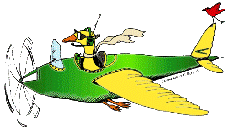Bird Strike Committee Proceedings
Date of this Version
October 2002
Document Type
Article
Abstract
Burgeoning continental resident Canada goose populations have led to increases in aircraft strikes. Once on or near airfields, geese have proven difficult to move and keep away. Playback of naturally recorded alarm and alert calls of the species was coupled with multiple harassment techniques to determine if this strategy would prove effective at removal of long-term resident geese from a 24-ha business park in Dayton, Ohio. The study began 26 February 2002, following territorial establishment by the geese, and continued until the last few geese had abandoned the property as of 14 May 2002. Most geese present were reusing nest territories from previous years, and thus strong nest-site fidelity made these perhaps the most difficult of all geese to remove in a nonlethal manner. Call playback used three “Goosebuster” units (Bird-X Corp. Inc., Chicago IL). Daily direct human harassment consisted of chasing geese on foot and placing objects such as owl decoys, sticks, or balloons in nests. Other harassment included sporadic use of two Chesapeake retrievers over 7 mornings, but this harassment was not considered essential to discourage return by geese. Reports of goose aggression toward and injury to employees fell from 32 and 2 cases, respectively, in 2001 to zero in 2002. Employee time spent in harassment fell from 3-4 hours/day at the start to under 15 minutes/day. Goose droppings/100 m of walks fell from a mean of 195.7 to 3.3 between 26 February and 24 March 2002, a 98% reduction (P < 0.01), and remained low thereafter. Twice daily cleaning of walks done prior to the study was deemed unnecessary by week 2 of the study, more than offsetting employee time in harassment activities. Continued alarm-call playback at random 10- to 20-minute settings appeared to help prevent return of resident geese or recolonization of the property by other geese. Goose use of the property dropped from 1600-1800 goose-hours/day before testing to fewer than 150 goose-hours/day by week 3 and to zero hours by May. Similar techniques may prove useful as nonlethal means to remove geese from areas on or near airports where they constitute a threat to air traffic.


